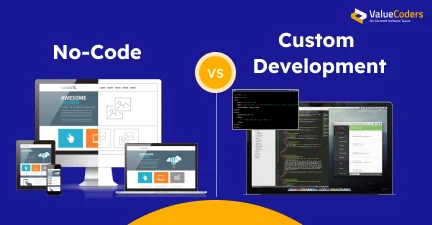As a business owner, you must know that creating and maintaining an online store is a time-consuming task. It also becomes expensive at the same time if you continuously update your website with new products or features.
Hence, partnering up with other vendors can help reduce this load by sharing the work.
In addition, Multi-Vendor Marketplace allows a wider range of product offerings in one space–making it simpler for patrons to find what they require from multiple sellers at once.
Are you ready to make a switch from selling on your own site exclusively? Opening up shop as part of a multi-vendor marketplace app using Magento 2 can be the appropriate choice for you.
Here we will be discussing what Magento 2 Multi-Vendor Marketplace extension can do and how it can help your business make the switch from selling offline to selling on your own site!
So let’s get started…
What Is Magento 2?
Image Source: zehntech
Magento 2 is one of the robust eCommerce platforms developed to provide merchants with an extensive range of features. Flexible product catalogs, order management, & shipping to customer service tools with live chat are a few very useful features of Magento 2.
Additionally, the Magneto 2 Multi-Vendor Marketplace extension provides the functionality that many businesses need in order to run their marketplace.
100,418 live websites are employing Magento 2; additionally, 88,589 sites used it historically.
What is a Multi-Vendor Marketplace?
A multi-vendor marketplace, also referred to as an online bazaar or trade exchange, is a type of eCommerce platform for businesses that sell products.
Unlike traditional eCommerce platforms, which focus on individual stores and brands, multi-vendor marketplaces offer the opportunity for many different vendors to sell their goods in one place. Some examples are Etsy and Amazon’s seller program.
If you are thinking of developing a Multi-Vendor Marketplace, get connected with a Magento programmer; they will assist you in developing a multi-functional online store.
Magento 2 Marketplace Extension Features
The Magento Multi-Vendor Marketplace extension features are extensive; these include:
- Integration with a Magento core product catalog
- Multi-vendors can create their own custom user account and storefronts.
- Order management for each vendor to have full control of their orders in one place without duplicates or conflicts. Additionally, an order created by one vendor will not impact another vendor’s order.
- Vendor management that provides an overview of all your active sellers and their activity within the marketplace
- Detailed seller statistics allow merchants to see how many sales each individual seller has generated. This is extremely useful for driving traffic towards top-performing marketplaces.
- Product management includes adding, editing, and deleting products as well as setting up product categories.
- Creating and managing coupon codes by each vendor to promote their own products or sales
- Taxes configuration with support for global taxes, per-vendor taxes, weight-based taxes, and location-based taxes
- Inventory management for individual vendors to manage the inventory of their own products as well as viewing real-time stock levels across all active sellers.
Get free consultation and let us know your project idea to turn it into an amazing digital product.
Reason To Form a Multi-Vendor Marketplace in 2024
With the increase in customer demand and more competition on all eCommerce platforms, it is essential that your enterprise stands out from its competitors.
In this case, a Multi-Vendor Marketplace can help you by allowing different brands or vendors to sell their products within one marketplace. Ultimately give customers a wider range of choices as well as greater value for money.
Increased customer base
With a multi-vendor marketplace, it is possible to reach a larger audience as you will be promoting your own products alongside those of other sellers providing customers with more options and greater value.
This means that merchants can sell their products at lower prices since they are not the only vendor on the platform.
Increased site traffic
As a Multi-Vendor Marketplace grows, it will attract more and more customers, which in turn will result in increased traffic to your website. This is because buyers are likely to visit the marketplace again if they had a good experience with shopping there.
Additionally, as word spreads about your multi-vendor platform, you can expect to see a steady flow of organic traffic coming in from social media and search engines.
Availability of niche products
If your business focuses on selling unique or specialist goods, it will be much easier for customers to find these.
In addition, if they are sold alongside the same kind of items by other merchants rather than looking through pages upon pages of listings on a traditional eCommerce platform.
Easier promotion
As a Multi-Vendor Marketplace, you will have the advantage of being able to promote your site carrying of individual products much easier than if you only had a single store.
By using social media, paid advertising, and email marketing, you can drive traffic towards your marketplace and get more sellers on board.
Also Read: Top Magento Companies to Choose for Your eCommerce Project
Why Create Marketplace With Magento 2?

Magento 2 is the perfect platform for creating a Multi-Vendor Marketplace due to its powerful features and extensive customization options.
Some of the key benefits of employing Magento 2 for this type of project include:
Robust eCommerce functionality
Magento 2 is built specifically for online stores and, as such, offers a wealth of features that make it easy to manage and run an online store.
Extensive range of addons
Magento 2 has a huge library of free and paid-for extensions that can be used on top of the platform, giving users even more features and functionality if required. This is essential when creating an eCommerce Multi-Vendor Marketplace, as you will need to add modules for vendor management, order management, shipping, and more.
Flexible Design
Magento 2 is highly customizable and can be adapted to fit the specific needs of your business. This means that you can create a marketplace that looks and feels unique to your brand without any problems.
50+ Payments Gateways
Magento supports over 50 types of payment gateway which means that customers can pay online using their preferred method.
This enables you to offer a wider range of products at the same time as giving buyers more choice when it comes to making payments.
SEO Friendly
Magento is a well-optimized platform from the ground up and, as such, is great for SEO. This means that your marketplace will rank high in search engine results pages (SERPs) which will bring more traffic to your site.
If you are looking for a powerful, feature-rich platform to create your Multi-Vendor Marketplace, Magento is the obvious choice. To find out more about how Magento 2 can help you, hire dedicated Magento developers.
Must-Have Features In Multi-Vendor Marketplace App
When creating a Magento Multi-Vendor Marketplace, there are certain features that you should involve in the app. These include:
Vendor Management
This is essential for managing all of the different sellers on your platform. You will need to be able to add and remove vendors, manage their profiles, set commission rates, and much more.
Product Management
As you will be offering multiple different sellers the ability to sell products on your site, it is vital that you offer an easy way for them to upload their items and manage those listings. This can include editing details such as images, prices, categories, etc. You might even want a bulk product upload tool to make it even easier for sellers.
Order Management
As orders will be coming in from multiple different sellers, you will need a system in place for managing and tracking them all. This should include the ability to view order status, track shipping, and more.
Get free consultation and let us know your project idea to turn it into an amazing digital product.
Shipping Management
This is another important feature that you will need to consider. As your marketplace will be selling products from different sellers, it is likely that they will all use different shipping methods. You will require a system in place for tracking and managing these shipments, which can include automated shipping rates calculation and order fulfillment.
Payment Processing
One of the most crucial facets of a Magento Multi-Vendor Marketplace is accepting payments from buyers. You will need to integrate a payment method into your site, which can then be used by sellers on the marketplace and processed automatically for each order.
Customer Management
As you will have multiple customers visiting your online store, it is vital that you provide a simple way for them to check out their order history, track their shipments, and more. This can be done through a customer login area on your site.
These are just some of the features that you will need to think about when creating a Multi-Vendor Marketplace. To know more, get connected with our Magento eCommerce development team today.
How To Build A Multi-Vendor Marketplace App Using Magento 2?
Now that you know all about why Magento is the perfect platform for creating a Multi-Vendor Marketplace – let’s take a look at how to actually go about building one.
Steps by steps to create Multi-vendor Marketplace App Using Magento 2:
1. Choose The Right Magento Edition
The first step is to decide on which Magento edition you want to use for your Multi-Vendor Marketplace. There are three options: Magento Open Source, Magento 2 Commerce, and Magento Cloud.
Each has its own benefits & features, so make sure you choose the one that best suits your needs.
2. Set Up The Basic Store
Once you have decided on the Magento edition, you need to set up the basic store. This includes creating a website and adding products. The process is relatively simple, and there are plenty of helpful guides online if you get stuck.
3. Install The Necessary Extensions
In order to create a Magento Multi-Vendor Marketplace, there are some necessary extensions you will need to install. These include:
- Multi-Vendor Marketplace – This gives the user the ability to add multiple vendors as well as have complete control over their accounts and products. This extension also allows customers to search for specific items from different sellers, which is perfect for a marketplace.
- Order Management – This extension allows users to manage orders from different vendors in one place and is essential for a successful Multi-Vendor Marketplace.
- Shipping – This extension provides shipping functionality for the marketplace and is required if you want to offer shipping options to customers.
4. Configure The Extensions
Once the extensions installation process gets over, you need to configure it according to your specific needs. This can be a daunting task, but you can hire Magento 2 developers as they will guide you through it and make sure everything is set up correctly.
5. Create The Marketplace
The final step is to create the actual marketplace. This will involve setting up the vendor accounts & creating an online store for them to sell their products through.
6. Market Your Marketplace
Finally, you will need to market the Multi-Vendor Marketplace so that customers can find it and start using it! This isn’t a difficult process, but you do need to know what steps work best to get people interested in your store.
Following these steps, you can create an impactful Multi-vendor marketplace using Magento 2.
Get free consultation and let us know your project idea to turn it into an amazing digital product.
Wrapping Up
The Multi-Vendor marketplace is the future of retail. If you’re not on board yet, it’s time to start thinking about how your business will fare in 2024. Consider a multi-vendor marketplace with Magento 2 to stay competitive and give customers what they want – more options!
Moreover, building a multi-vendor marketplace is not as hard as it sounds, and the benefits are plentiful. With Magento 2’s integrated commerce platform, you can build your own successful eCommerce site that includes many different vendors selling their goods to one unified customer base.
If you’re interested in launching this type of online store, we can help! Hire Magento programmers from ValueCoders – the best Magento eCommerce development company and immediately start working on your project.






